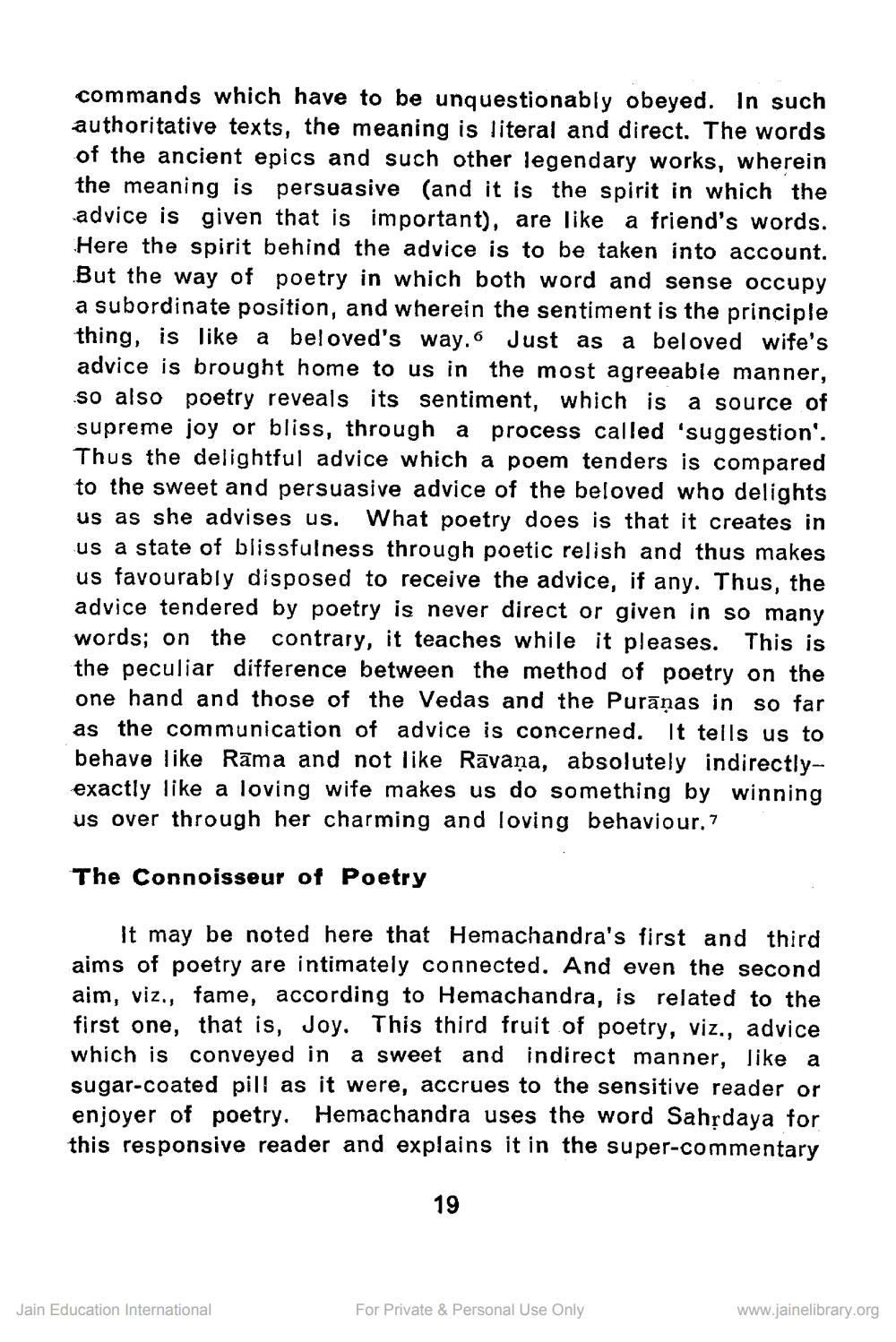________________
commands which have to be unquestionably obeyed. In such authoritative texts, the meaning is literal and direct. The words of the ancient epics and such other legendary works, wherein the meaning is persuasive (and it is the spirit in which the advice is given that is important), are like a friend's words. Here the spirit behind the advice is to be taken into account. But the way of poetry in which both word and sense occupy a subordinate position, and wherein the sentiment is the principle thing, is like a beloved's way. Just as a beloved wife's advice is brought home to us in the most agreeable manner, so also poetry reveals its sentiment, which is a source of supreme joy or bliss, through a process called 'suggestion'. Thus the delightful advice which a poem tenders is compared to the sweet and persuasive advice of the beloved who delights us as she advises us. What poetry does is that it creates in us a state of blissfulness through poetic relish and thus makes us favourably disposed to receive the advice, if any. Thus, the advice tendered by poetry is never direct or given in so many words; on the contrary, it teaches while it pleases. This is the peculiar difference between the method of poetry on the one hand and those of the Vedas and the Puraṇas in so far as the communication of advice is concerned. It tells us to behave like Rama and not like Ravaṇa, absolutely indirectlyexactly like a loving wife makes us do something by winning us over through her charming and loving behaviour.7
The Connoisseur of Poetry
It may be noted here that Hemachandra's first and third aims of poetry are intimately connected. And even the second aim, viz., fame, according to Hemachandra, is related to the first one, that is, Joy. This third fruit of poetry, viz., advice which is conveyed in a sweet and indirect manner, like a sugar-coated pill as it were, accrues to the sensitive reader or enjoyer of poetry. Hemachandra uses the word Sahrdaya for this responsive reader and explains it in the super-commentary
Jain Education International
19
For Private & Personal Use Only
www.jainelibrary.org




